 Another summer, and another season for blackberries. Each year the team at Podantics take an afternoon off to go blackberrying with one of our regular clients "Howie". Once the blackberries are picked its time to make Jam which is then distributed amoungst our clients and friends. Happy eating!
0 Comments
Our Adelaide Podiatry Clinics will be closed between the 21st of December 2012 til the 7th of January 2013. Messages can still be left on our answering machine requesting a call back for appointments in the new year on 8272 8755 or email requests can be made at [email protected]
After Julias tumble last week, Our Senior Podiatrist Anna Morgan provides some important advice for high heel wearers for Adelaide's Advertiser October 2012
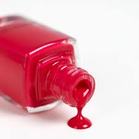 Yes it can. Hybrid gels (e.g. Shellac, Gelish, Axxium) can cause significant weakness in the nails as well as leave you prone to fungal infections, onycholysis (lifting of the nails) and tearing. This year i have seen a number of shellac related nails problems. I have had to super glue torn nails for blushing brides, given plenty antifungal treatment advice to those who's nails have suddenly lifted off the nail bed as well as painlessly removed several nails that have fallen off all together leaving them at risk of future ingrown nails. It must be noted that this damage occurred in otherwise healthy feet! In some ways shellac is less damaging than acrylics that needed to be filed off for removal, but as proven by a recent study shellacs can in fact cause significant weakness, thinning and brittleness of toe nails. In one measurement, the nail was measured to be about 50% thinner! The people who ran this study were unsure of whether it's the chemicals in the polish, or the application/removal process with harsh chemicals and acetone that damages the nail, however in my experience i have seen this damage on people shortly after their first application suggesting it is more likely the chemicals or application rather than the removal. When considering if you should be applying shellac or gels to your toes, consider how important keeping the polish on for 6 weeks really is. As for those who have thinner nails to begin with, extra care should be taken! related articles - Nail Problems - Ingrown toenails - Fungal Nails - Podiatry - Pedicures 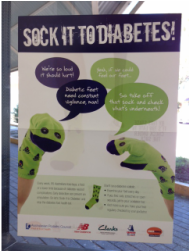 Every week 85 Australians lose a toe, a foot or even a leg due to diabetes related complications. Early detection can prevent an amputations. So lets 'Sock it to Diabetes' and stop the diabetes foot health toll. Don't be diabetic statistic! -Examine your feet everyday -If you find cuts, scratches or open wounds get to your podiatrist fast -Make sure you get your feet checked by your podiatrist every 6 months for a diabetic foot assessment. For more info on diabetes and the ways in which your podiatrist can help click here This year has seen a break out in the number of ingrown toe nails seen across our clinics. Ingrows tend to be more problematic in the winter months due to heavier blankets putting pressure on the sides of the big toes as well as the amount of time spent in tight socks and closed in shoes. These factors all add to the amount of excessive pressure on the toes and pinching against the nails.
This year has been an exceptionally long and cold winter and feet have not had a time to recover from all this pressure and micro trauma. Of course, poor nail cutting, poor shoes, and genetically "different" toes all play their part to the cause, however during a long winter like this, the chance of problems is greater than most! More information: - Ingrown nails - Cold Feet - Nail Surgery - Podiatry at Podantics 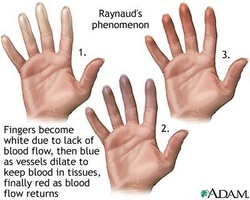 Cold feet and hands are common in the winter months but for some of us, something called raynaud's phenonmemon may make the cold months unbearable. Common symptoms are cold and often whitish coloured fingers and toes that react to the cold more than the next person. Cold hands and a warm heart? Than you may be a classic Raynaud's sufferer. Its normal for hands and feet to be a different temperature to others and its also normal for the coldy to cause discomfort in women than men due to our biological differences, but in some people their bodies have an over exaggerated response to cold causing white, numb, and even tingling hands and feet called Raynauds. Raynauds is an over exaggeration of the body in response to cold and in some cases emotional stresses. It is caused by a part of the brain (the sympathetic nervous system) over reacting to the cold causing a constriction of the blood vessels in our arms and legs leading to a lack of blood flow and hence warmth and healthy colour. Cold hands and feet may also be a sign of poor circulation, such as that seen in diabetics or those with cholesterol problems. The difference with Raynauds compared with these problems is that Raynauds occurs in people with otherwise healthy blood flow and only due to exposure to the cold. If you think you have Raunauds it might be worth getting your circulation tested. At Podantics we can also check for other risk factors that may lead to poor circulation as well as testing your circulation with the help of a doppler ultrasound. By using a doppler we get a chance to not only see on a chart what your blood vessels are doing but hear the quality of the blood vessels as part of a thorough assessment. For more information on how to warm your feet this winter visit our info page on Cold Feet Adelaide Cup is on Monday and feet all around Adelaide will be on show. Our top 3 tips to fab feet on cup day are:
1) Moisturise cracked heels and cuticles before leaving the house. The cream will automatically soften the look of your feet giving them an instant make over. Just be careful to avoid the soles of your feet, there's nothing worse than having slippery feet. 2) Choose your nail polish colour wisely. The right colour can make or break an outfit. If your wearing pink for example, choose a slightly lighter shade to compliment an out fit. If your wearing black, choose something with a bit of life to lift the look! 3) Wear the right shoes. Swollen bruised feet are not a good look at the end of the day. Whilst you might look great leaving the house in the morning, give a thought to what they may look like on the way home. After all, we should all be nice to our feet, they're pretty important. Oh, and always pack some flatties in your handbag- just in case! Happy racing! As you might be aware diabetes can affect both the circulation and sensation in your feet placing you at higher risk of complications such as infections, ulcers, or even in extreme cases, amputations. Under the right circumstances, circulation and sensation can change quickly and as such the doctors and the medical associations recommend that diabetic feet be checked at least every 6 months.
Circulation Testing: - Checking pulses for good pressure in the feet. Good blood flow to diabetic feet is vital. If needed a small ultrasound machine is placed against the blood vessels as a way of hearing for minor changes in the blood vessel and looking at the velocity of the blood through the artery. - Minor blood vessels are also assessed by a quick pressure test (SVPFT) - Visual inspection. Decreased circulation comes with it a number a visual clues such as varicose veins, thinned skin, changes in skin colour and temperature, loss of hairs on the toes and more. We check the feet for these visual clues to give us and idea of what might be going on under the surface. Sensation testing - Pressure testing. Loss of this 10gram sensation in a diabetic is a strong warning that a person may cut or injury their feet without knowing it. With the clients eyes closed, we use a 10g monofilament to gently place pressure on different areas of the foot to determine if you can feel it or not. - Vibration testing. Loss of vibration sensation is an early warning sign that there may be diabetic related changes occurring in the feet and often occurs before a loss of pressure. By placing a medical graded tuning fork we can determine how much vibration sensation you have lost, if any. In addition to circulation and sensation testing we also check a number of risk factors that may contribute to the health of your feet. Smoking, cholesterol and health problems may contribute to the problems associated with diabetic feet. We also check for good eye site, flexibility, as well as your gait (the way you walk), calluses, nail problems and more for a thorough assessment. For more information click here. Cracked heels are not just unsightly, but can be health risk as they can lead to an infection in the feet.
Our top 5 tips for fixing cracked heels include: 1) Using a moisturising cream in the morning to give the heels the added elasticity they need to prevent cracking during the day. The greasier the better. If slippery, just use it around the cracked areas and avoid putting on larger areas that you'll be walking on. Our favourite heel balm to use is Pedicare. 2) Use a foot file regularly on wet or dry feet (which ever works better for your skin type). If soaking the feet, avoid salt as it is drying, instead add a few drops of oil or some bi-carb to the water to soften to help soften the heels. 3) If split, use a a piece of rigid sports tape to hold the crack together whilst your feet heal. If one piece doesn't work, you can tape the whole region as needed. Not only will it hold the crack together, but the tape will lock all moisture into the heel area helping it mend again. 4) Never walk bear feet on hot surfaces. Imagine how dry your face would feel after 5mins on hot cement! Hot surfaces strip the natural moisture from the feet and cause cracking of the heels in a matter of minutes. 5) If heels need a serious clean up, your podiatrist will be able to get them back to baby smooth in a matter of minutes saving you the hastle and giving you a kick start in the right direction. Note: Cracked heels, especially in diabetics, can lead to serious infections in the feet and if raw or bleeding you must always use an antiseptic and cover the area until healed. for more info on cracked heels, click here. |
AuthorAnna Morgan Archives
January 2019
Categories |
Contact Us |
Services |
Foot Conditions |
|

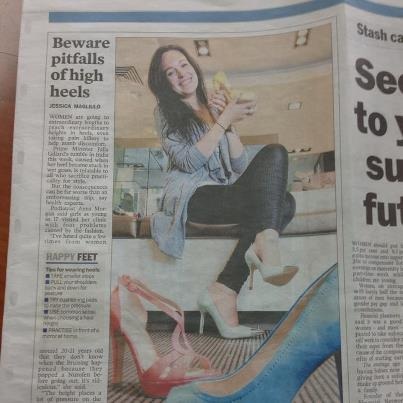
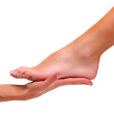
 RSS Feed
RSS Feed

